In July 2023, the Shakopee Mdewakanton Sioux Community announced its plans to reintroduce a pteoptaye (bison herd) on its tribal lands in Shakopee in late fall 2023. The Dakota people consider the pte (bison) a relative, and the tribe has been conducting an extensive planning process to bring bison back to its lands in a sustainable, safe and ecologically beneficial way.
When will the pte arrive? Where are they coming from?
In late 2023, the SMSC will welcome a small herd of less than 15 pte from the Sisseton Wahpeton Oyate in South Dakota. The pte will not be available for public viewing until several months after their introduction to allow time for them to acclimate to their new environment.
Where will the pteoptaye be located?
The SMSC’s pteoptaye will live on 165 acres of tribal land southeast of the junction of County Road 83 and Eagle Creek Boulevard in Shakopee, north of the tribe’s existing Organics Recycling Facility. The pte will roam freely within an enclosure and graze native prairie plants.
How secure will the pte enclosure be?
An eight-foot fence will be installed around the entire perimeter; a four-foot pedestrian fence will be installed along a portion of Mystic Lake Drive South and Eagle Creek Boulevard; and a six-foot privacy fence will be installed to the east and south of Blakewood Drive. The area will also be monitored with security cameras.
What kind of planning and safety measures are underway?
The SMSC Land and Natural Resources Department is overseeing the planning process, including learning from other tribes and organizations that have successfully reintroduced pte. The SMSC is completing a safety plan and working with local municipalities and public safety agencies to ensure the safety of the herd and local residents.
What is the history of pte in the area? Why does the SMSC want to bring them back?
Historically, the SMSC looked after and had a reciprocal relationship with the natural surroundings, including pte, which the Dakota people depended on for food, medicine and materials. When colonization occurred, the pte were violently removed from the area and nearly exterminated. Wetlands and prairies were once widespread in Scott County, and the SMSC has worked to restore both ecosystems on the reservation. The SMSC has restored more than 1,000 acres of prairie over the past 20 years; the pteoptaye will help maintain prairie health.
What is the word for bison in the Dakota language?
In our Dakota language, bison are pte [pronunciation] and a bison herd is a pteoptaye [pronunciation] . Other Dakota tribes may have different terms and pronunciations.
Will there be a public viewing area for the pte? Or will there be any learning opportunities for visitors or school groups?
While this is currently under consideration, plans for a specific public viewing area or learning opportunities have not yet been developed.
Are there other pteoptaye in Minnesota? What other tribes or organizations has the SMSC consulted with in its planning process?
The SMSC has consulted with tribes and organizations in Minnesota and beyond that have successfully reintroduced pte, including the Prairie Island Indian Community, Red Lake Band of Chippewa, Standing Rock Sioux Tribe, Crow Creek Sioux Tribe, The Snake River Farm, Belwin Conservancy, Cedar Creek Ecosystem Reserve, Minneopa State Park, Minnesota Zoo, Dakota County Spring Lake Park, and the InterTribal Buffalo Council.
How big are pte? What is their temperament?
The pte is the largest land mammal in North America. Males (bulls) weigh up to 2,000 pounds and females (cows) weigh about 1,000 pounds. In general, bison are docile but like many large animals, they can become aggressive if people get too close. Safety fences around the enclosure will ensure that pte and people maintain a safe distance.
Are pte noisy animals? Do they have an odor?
There will be so much room for the pte to roam in their enclosure that their noises and odors should not be noticeable to the public.
Who will take care of the pte? Will they be tracked or monitored?
The SMSC Land and Natural Resources Department will care for the pte. The SMSC hired a pteoptaye coordinator who will be dedicated to overseeing the herd. Both the pteoptaye and the fence/enclosure will be regularly monitored.
Does the SMSC plan to breed the pte? How many babies can female pte have in a year? How large will the herd ultimately be?
At the beginning, the SMSC’s pteoptaye will be all female. Once female pte are 2-3 years old, they may give birth to a single calf each spring. The SMSC plans to introduce a breeding male to the herd in the future. The planned enclosure could eventually accommodate up to 32 pte.
Will any facilities be built on the site of the pte enclosure? Will there be lights?
A handling facility will be constructed within the enclosure. The handling facility will be used for herd management and to care for the pte, serving as a place to provide health checks, weigh the pte, and eventually care for pte calves. No additional lighting is being added to the area.
Will the pte stay in the same location year-round? Will they be moved inside in the winter?
The pte will stay in the same outdoor enclosure year-round. They do not need to be moved inside in the winter.
Will the pte be harvested or used for food?
Once the herd grows, the SMSC plans to harvest a few pte annually through traditional methods for the Community to use for food and medicine. This will not happen for several years.
Does the SMSC plan to sell pte products now or in the future?
The SMSC may explore selling pte products in the future, but not for several years.
I would like to learn more about pte. Do you have any other resource recommendations?
Here are several helpful resources about pte:
Learn More About the SMSC
Read about our people or visit our frequently asked questions for additional information about the Shakopee Mdewakanton Sioux Community.
Shakopee Mdewakanton Sioux Community
2330 Sioux Trail NW
Prior Lake, MN 55372
952.445.8900
Contact a Department >












